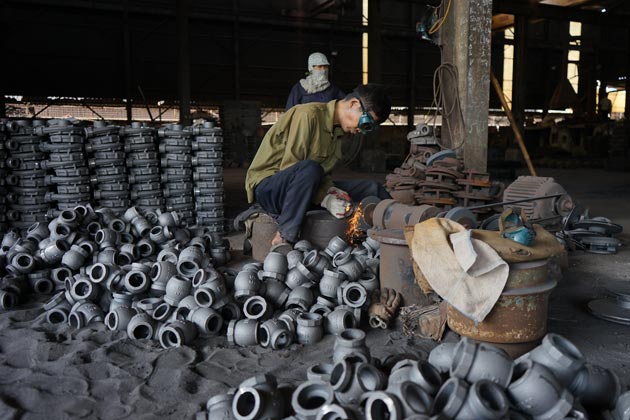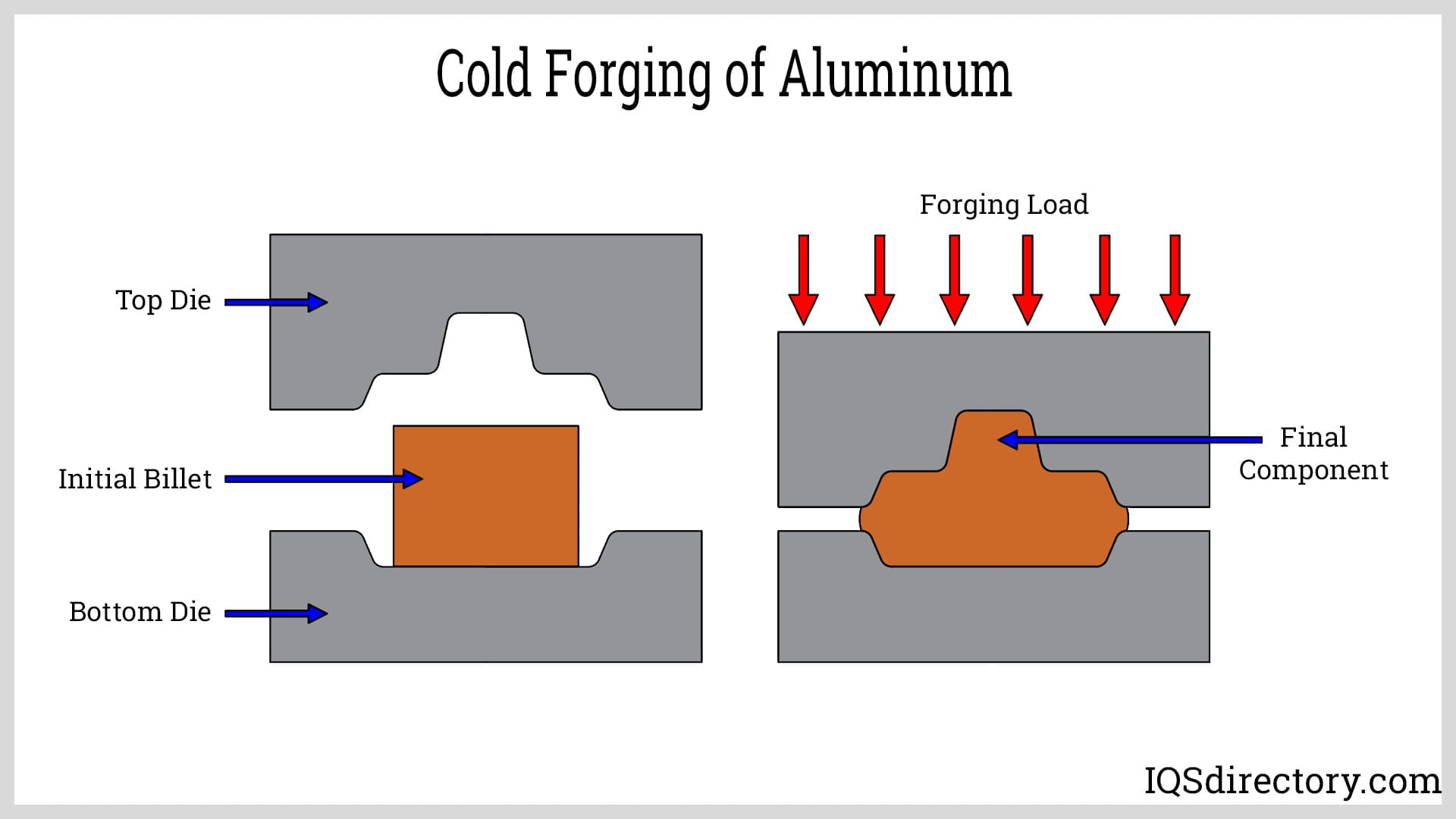Exactly How Aluminum Foundry Contributes to Improvements in Aerospace Engineering
Aluminum factories are important to developments in aerospace engineering. They produce light-weight, high-strength components that are necessary for contemporary airplane. Via innovative spreading strategies, these shops produce complicated geometries that enhance architectural honesty. Additionally, the advancement of superior Aluminum alloys sustains the market's concentrate on gas performance and sustainability. Nevertheless, obstacles remain in the production process. Recognizing these factors exposes the extensive impact of Aluminum on aeronautics's future.
The Importance of Lightweight Products in Aerospace Design
As the aerospace market remains to develop, the significance of lightweight products comes to be progressively noticeable. The demand for effectiveness and sustainability drives designers to focus on using materials that reduce overall weight without endangering structural stability. Lightweight materials, especially Aluminum, play a crucial role in improving fuel effectiveness, enhancing haul ability, and increasing the general performance of airplane.
Additionally, the assimilation of these products permits innovative styles, enabling suppliers to create more wind resistant forms that can withstand extreme conditions. The reduction in weight not only lowers operational prices however also adds to a reduced ecological impact, aligning with global initiatives toward sustainability in aviation.
Advanced Spreading Techniques in Aluminum Foundries
Advanced casting methods in Aluminum foundries play an important duty in aerospace engineering by allowing the production of lightweight and accurate components. Developments in mold and mildew style and precision casting processes are vital in accomplishing perfect performance and architectural honesty. Furthermore, the growth of lightweight alloys boosts the general effectiveness and efficiency of aerospace applications.
Innovative Mold Design
Cutting-edge mold and mildew style plays a necessary role in the effectiveness and effectiveness of Aluminum foundries, specifically within the aerospace market. By leveraging innovative materials and techniques, modern-day molds can be crafted to stand up to high temperature levels and pressures, ensuring peak performance during the casting process. These styles usually integrate intricate geometries that enable the production of light-weight yet structurally sound parts, crucial for aerospace applications. Furthermore, making use of computer-aided layout (CAD) software promotes specific modeling, allowing shops to mimic and fine-tune mold and mildew designs prior to physical manufacturing begins. This not just boosts the quality of cast components but likewise decreases waste and preparation, leading to substantial price financial savings. Generally, ingenious mold and mildew style is a keystone of development in Aluminum Foundry technology for aerospace engineering.
Precision Casting Procedures
The performance of ingenious mold styles effortlessly integrates with accuracy casting processes, which are crucial for producing top notch Aluminum components in aerospace design. These processes, consisting of sand spreading, pass away casting, and financial investment spreading, assure the creation of intricate geometries with tight resistances. Advanced methods like vacuum cleaner spreading and stress pass away casting enhance the stability and surface finish of the end products. Precision spreading decreases material waste while taking full advantage of the mechanical residential properties of Aluminum, crucial for aerospace applications. Additionally, using real-time monitoring and advanced simulation devices during the casting process permits prompt changes, leading to improved quality control. Jointly, these accuracy spreading processes setting Aluminum factories at the leading edge of aerospace advancement, supporting the market's need for reliability and efficiency.
Lightweight Alloy Development
As aerospace engineers seek to boost fuel effectiveness and performance, light-weight alloy growth ends up being an essential emphasis in Aluminum factories. These factories utilize innovative casting strategies to create alloys that offer remarkable strength-to-weight ratios. Developments in alloy make-up, consisting of the unification of elements like lithium and magnesium, make it possible for the production of products that stand up to extreme conditions while decreasing overall aircraft weight. Methods such as die casting and financial investment casting assist in the accuracy manufacturing of complicated shapes, which are crucial for aerospace applications. Additionally, recurring research study aims to enhance these alloys for improved mechanical residential or commercial properties and raised longevity. By focusing on lightweight alloy growth, Aluminum foundries considerably add to the development of aerospace design, paving the means for more sustainable and efficient airplane designs.

Enhancing Architectural Honesty Through Aluminum Parts
Aluminum components offer substantial benefits in boosting structural stability within aerospace design. Their light-weight nature adds to general effectiveness while preserving stamina, which is essential for aircraft efficiency. In addition, the tension resistance residential or commercial properties of Aluminum help guarantee the sturdiness and dependability of aerospace frameworks under various operational conditions.
Lightweight Material Perks
While typical materials frequently jeopardize weight for stamina, making use of Aluminum elements in aerospace engineering offers significant benefits in structural honesty. Aluminum's light-weight nature adds to overall layout performance, permitting even more structured aircraft that consume less gas, consequently improving sustainability. The material's excellent strength-to-weight proportion guarantees that parts preserve sturdiness without adding unnecessary mass. This high quality cultivates improved performance and agility in trip, along with enhanced payload abilities. Furthermore, Aluminum's resistance to deterioration prolongs the life-span of aerospace structures, reducing upkeep expenses and improving security. As manufacturers progressively adopt Aluminum alloys, the aerospace sector experiences a transformative change towards more reliable and efficient engineering options that focus on both performance and ecological responsibility.
Anxiety Resistance Properties
Various materials possess unique buildings, Aluminum's exceptional tension resistance stands out as an important factor in improving the structural honesty of aerospace elements. This resistance plays an essential role in ensuring that airplane can withstand various operational tensions, including tiredness, influence, and environmental conditions. Aluminum alloys, specifically engineered for aerospace applications, display high tensile stamina while maintaining light-weight qualities, making it possible for designers to create much more efficient structures - Aluminum Foundry. In addition, the ability of Aluminum to withstand cyclic loading without substantial contortion adds to the long life and integrity of aerospace components. As developments proceed in Aluminum Foundry methods, the growth of stress-resistant Aluminum elements promises further enhancements in performance, security, and effectiveness across the aerospace industry, solidifying Aluminum's function as a recommended product in modern design
Fuel Performance Improvements Driven by Aluminum Innovations
As the aerospace market looks for to improve gas performance, cutting-edge uses of Aluminum have actually arised as an essential option. Aluminum's lightweight nature notably lowers aircraft weight, permitting reduced fuel usage during flight. This decrease in weight is important, as even small declines can cause considerable renovations in general gas economic situation.
Advanced Aluminum alloys, developed for enhanced toughness and resilience, allow manufacturers to create elements that keep architectural honesty while lessening mass - Aluminum Foundry. Additionally, the integration of Aluminum in airframes and engine elements promotes improved the rules of aerodynamics, contributing to lowered drag and increased efficiency
The fostering of Aluminum in aerospace not just satisfies the need for fuel-efficient layout however likewise straightens with regulative stress for lower discharges. As these technologies remain to advance, they play a substantial role in establishing new standards for gas performance, guaranteeing that the aerospace field can meet growing financial and ecological difficulties.

The Duty of Aluminum in Sustainable Aviation Practices
The increasing emphasis on lasting aeronautics methods has placed Aluminum as a vital material in the mission for greener aircraft style. Known for its lightweight homes, Aluminum substantially decreases aircraft weight, leading to reduced fuel consumption and discharges. Its recyclability further enhances its sustainability profile, as Aluminum can be check this site out recycled indefinitely without loss of quality. This particular sustains a round economic climate within the air travel sector, minimizing waste and resource exhaustion.
Innovations in Aluminum alloys have improved their strength and rust resistance, permitting for longer solution life and decreased maintenance requirements. These advancements assist in the advancement of more reliable aircraft frameworks, adding to general sustainability initiatives. Furthermore, Aluminum's site web thermal conductivity plays a crucial function in energy-efficient styles, boosting systems such as heat exchangers. Collectively, these qualities underscore Aluminum's critical function ahead of time lasting air travel, straightening with worldwide efforts aimed at minimizing the environmental effect of flight.
Difficulties Faced by Aluminum Foundries in Aerospace Manufacturing
While Aluminum foundries play an important function in aerospace production, they face significant challenges that can affect manufacturing efficiency and high quality. One significant difficulty is the strict quality assurance standards needed in the aerospace sector. Any kind of issue can endanger safety and security and efficiency, necessitating strenuous evaluation processes that expand production timelines. Furthermore, factories frequently compete with changing basic material expenses, which can impact prices and earnings. The intricacy of Aluminum alloys made use of in aerospace applications more complicates the production process, as accurate formulations are essential for achieving preferred mechanical residential properties. In addition, proficient labor lacks impede the capability to maintain top quality manufacturing levels. Ecological policies enforce limitations on discharges and waste administration, calling for factories to invest in lasting techniques, which can be cost-prohibitive. These factors collectively develop a landscape where Aluminum factories have to constantly adapt to fulfill the evolving needs of aerospace production while ensuring security and conformity.
Future Fads in Aluminum Applications for Aerospace Design
With developments in technology and boosting demands for effectiveness, the future of Aluminum applications in aerospace engineering is poised for significant change. The combination of ingenious Aluminum alloys and compounds is expected to enhance strength-to-weight proportions, causing more fuel-efficient aircraft styles. Furthermore, innovations in additive production techniques will certainly enable over at this website the production of complicated Aluminum structures that were previously impossible, enhancing performance and lowering waste.

Sustainable methods will certainly play a vital duty, with a growing emphasis on recycling Aluminum to minimize ecological influence. The aerospace industry is likely to welcome smarter producing procedures, such as automation and artificial knowledge, making sure greater high quality and accuracy in Aluminum elements. In addition, cooperations between Aluminum foundries and aerospace firms will certainly cultivate r & d, paving the way for new applications that meet the strict needs of modern aerospace engineering - Aluminum Foundry. In general, the future looks assuring for Aluminum's duty in forming the skies
Often Asked Inquiries
What Are the Environmental Impacts of Aluminum Production in Aerospace?
The ecological impacts of Aluminum manufacturing in aerospace consist of significant energy intake, greenhouse gas exhausts, and environment disturbance. In addition, mining procedures can bring about soil degradation and water contamination, elevating worries regarding sustainability and eco-friendly equilibrium.
Just How Does Aluminum Contrast to Other Materials in Aerospace Applications?
Aluminum offers a special mix of lightweight residential or commercial properties, deterioration resistance, and cost-effectiveness compared to other products. Its high strength-to-weight ratio makes it particularly useful for aerospace applications, improving gas efficiency and general performance in airplane design.
What Certifications Do Aluminum Foundry Workers Need for Aerospace Projects?
Aluminum Foundry workers require specialized training in metallurgy and spreading methods, along with expertise of aerospace market standards. Accreditations in quality control and safety and security methods are likewise vital to guarantee conformity with strict aerospace task demands.
Exist Any Safety And Security Worry About Using Aluminum in Aerospace Design?
Safety and security worries concerning Aluminum in aerospace design consist of vulnerability to stress, corrosion, and tiredness fractures. Correct therapy and alloy selection are essential to mitigate these dangers, making certain structural honesty and total safety in aerospace applications.
Exactly How Does Aluminum Recycling Advantage the Aerospace Market?
Aluminum reusing greatly benefits the aerospace market by decreasing material expenses, decreasing ecological effect, and conserving power. This sustainable practice enhances the industry's efficiency while promoting making use of lightweight, high-performance elements in aircraft production.
Advanced spreading techniques in Aluminum shops play an important duty in aerospace design by allowing the manufacturing of accurate and lightweight components. Ingenious mold design plays an important duty in the performance and efficiency of Aluminum factories, particularly within the aerospace industry. As aerospace engineers seek to improve fuel performance and performance, light-weight alloy growth comes to be an essential emphasis in Aluminum foundries. Aluminum alloys, particularly engineered for aerospace applications, exhibit high tensile toughness while preserving light-weight features, making it possible for engineers to create much more efficient frameworks. Partnerships between Aluminum factories and aerospace companies will foster study and advancement, paving the way for brand-new applications that fulfill the rigid requirements of modern-day aerospace engineering.